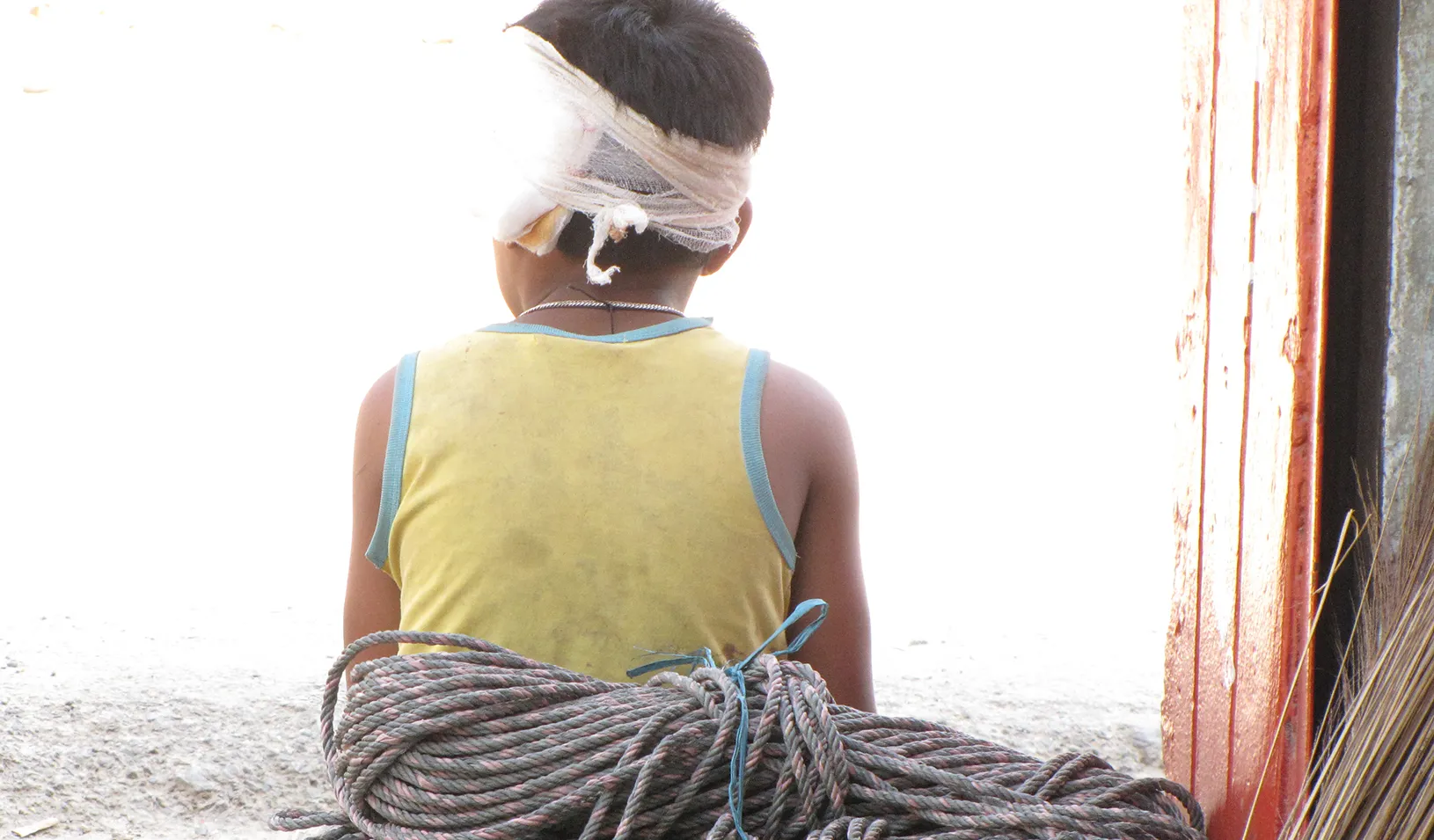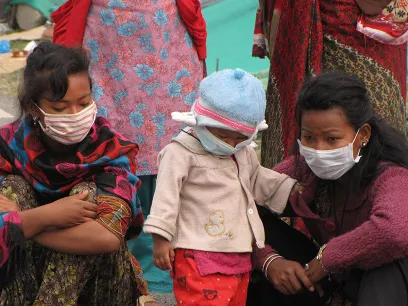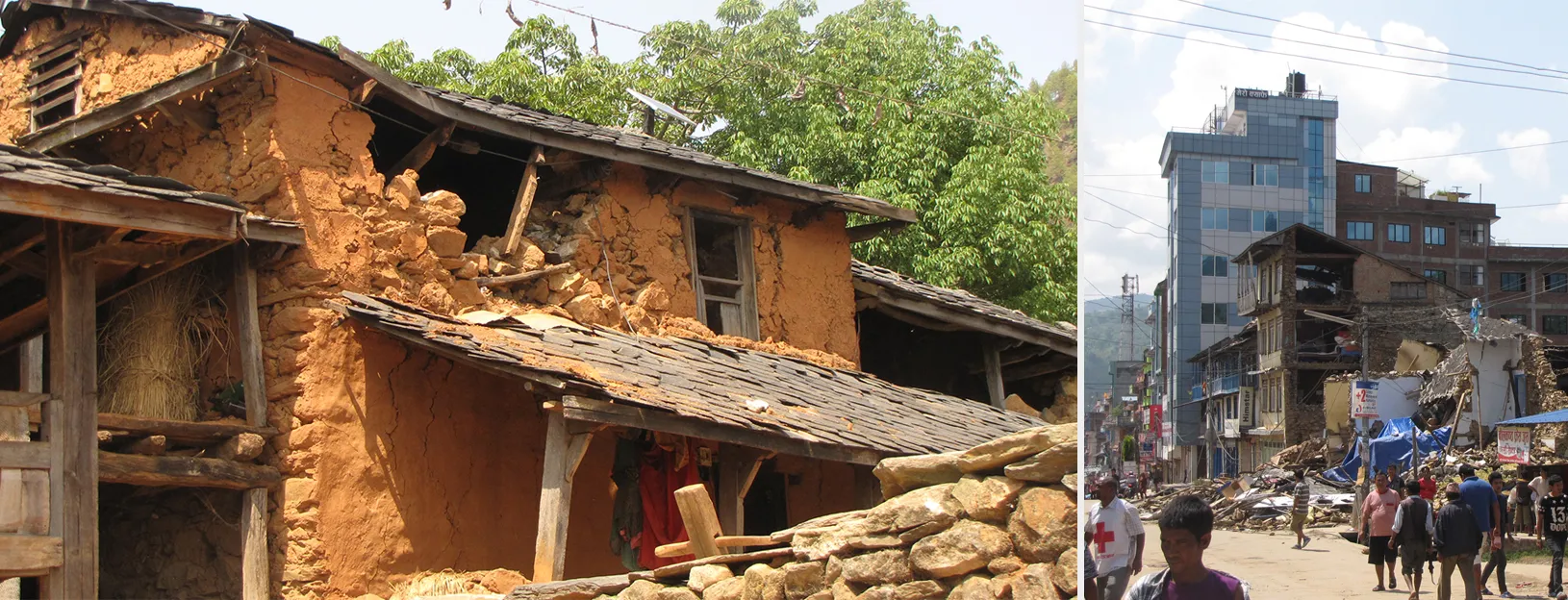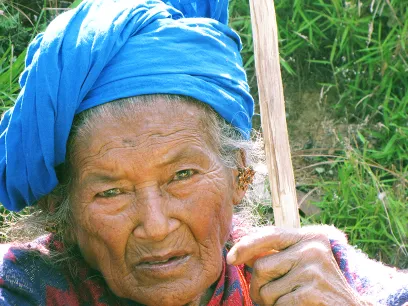
An earthquake in Nepal in April injured more than 19,000 people. | Courtesy Paul Auerbach
For the better part of a week, Stanford physician Paul Auerbach worked from the back of a vehicle in Kathmandu, in a village health post missing part of its wall, at a district hospital in Dhading, and in a school building tending to the ill and injured following the April earthquake in Nepal that killed more than 8,000 people and sent aftershocks rattling through the mountainous region. “We were a little nervous about being inside the clinic building,” the emergency medicine professor says. “We positioned ourselves so that we could exit pretty quickly.”
Auerbach was part of a team brought to the region by the nonprofit relief organization International Medical Corps. His first experience in massive disaster relief was in Haiti, where hundreds of thousands of people were killed in the 2010 earthquake. Here he discusses the differences between the responses, and how leaders can better prepare for the inevitable natural disaster. Auerbach is a 1989 MS graduate of Stanford GSB and a professor at Stanford University School of Medicine. He is editor of the textbook Wilderness Medicine, which emphasizes care in austere settings.
Was Haiti your first emergency response experience?
It was my first really big one. I had been involved in a few mass casualty incidents with a maximum number of victims of approximately 20. I went from 20 to thousands in Haiti, so that was a huge leap for me.
How did Nepal compare?

Collapsed buildings filled the air with dust, and many people wore masks to protect themselves. | Courtesy Paul Auerbach
The biggest difference was that Haiti, at the time of the earthquake, essentially had no medical infrastructure to speak of. The hospitals were not functioning. They didn’t have a robust medical community of any sort.
In Kathmandu, there were many functioning hospitals, and the majority of them were able to function at considerable or even full capacity because while the ancient buildings collapsed, the hospitals stood. Kathmandu has a medical infrastructure with highly qualified physicians and other healthcare personnel, so they were able to absorb the first wave of patients. They could have used some help, but they weren’t starting from scratch.
The second difference was the number of victims. In Port-au-Prince, there were probably 100,000 to 200,000 victims that needed to be cared for, as opposed to the situation in Kathmandu, where it was a much smaller number. Nepal had more capacity and fewer patients, and they had effectively practiced for this eventuality. All things considered, it was an outstanding response.
What are the immediate needs in disaster areas?
When you come in, you need to find the victims. You need to treat them. You need medical supplies. You need adequate personnel in order to manage the life- and limb-threatening injuries in the first few days. From the moment of the earthquake and forward, there’s a need for water and food. In Haiti, the supplies initially weren’t there. Everything needed to be carried in. In Kathmandu, for the most part, the supplies were available. Of course, they needed supplementation, and that happened and will continue to happen. In Kathmandu, they never were in a situation where they had nothing, which was unfortunately the situation in Port-au-Prince. Haiti was a very dire situation. It was horrific. I don’t mean to imply that things are good right now in Nepal. In the villages surrounding Kathmandu and in the areas affected by the second earthquake, the situation is still very bad.

Paul Auerbach (right photo, center) and his team flew into Kathmandu and worked in make-shift clinics and hospitals, tending to the injured. | Courtesy Paul Auerbach
How do teams best work in these intense environments?
Most organizations have a predetermined structure, and if they don’t know precisely who’s going to be in charge of which aspect, then they determine those roles right away. Optimally, you have organized groups involved in medical response. You have the requisite number of persons involved in logistics. There are persons assigned to security, communications, and so forth.
The team concept is more than important. It’s critical. People play roles in disasters, and everyone does his or her best to try to stay within their role. Because other people are counting on you and you on other people, you need to do your job.
Can there ever be too much disaster relief?
There comes a point when you have enough people and enough supplies. At that point, you need to start storing things and sending people home.
The responses are never perfect because you discover that you need more of something and less of something else. The same holds true for people. For example, the changing nature of medical conditions following an earthquake causes you to need emergency medicine specialists early on, but then orthopedic surgeons and reconstructive surgeons later during the response.
Very early on, you want public health specialists and people who know how to deal with sanitation, water, and hygiene to make sure people are well cared for and avoid the onset of communicable diseases, particularly diarrheal diseases like cholera.
Kathmandu proper had a robust response, but what’s unique about this situation is that outside of Kathmandu in the hill country, where the normal transportation is hiking very steep, narrow mountain trails for one or two days to get from village to village, many of those communities had all their dwellings wiped out. People were cut off from rescue and communications. If they could’ve walked down, they would have done that. They couldn’t, either because they were injured or because the paths were impassable from rockslides or other obstructions. So they could only effectively be approached from the air by helicopter, and supplies, shelters, food and water, and rescue personnel delivered that way.
Supply chain seems critical. How do you know if it’s working?
The simple answer is when you’re getting what you need in a timely fashion, it’s working well. When you’re not getting what you need, or you’re getting things you don’t need, then it’s not working well.
You mentioned previously that military are especially good partners in this.
Nobody can move people and materials like the military. The military is used to chain of command and structure, and they train to do these sorts of things. They’re all about teamwork, and they’re all about rapid response.
I wrote a paper after the Haiti earthquake about the civil/military collaboration we experienced because I wanted to make sure credit was given to the United States military. They saved the mission in Haiti. Without their support, many more lives would have been lost. They’re good at moving equipment. They have medics and doctors. They come to be helpful, and they show a lot of skill and compassion. They’re not coming to fight a war. They’re coming to help you out and save people, and they do it well.
In Nepal, there was less of a need for that kind of a massive military response, but where they were present, which was mostly Nepal’s military, they were really good.

Older buildings crumbled easily in the 7.8 magnitude earthquake. New buildings (including most of Kathmandu’s hospitals) survived. | Courtesy Paul Auerbach
What could Nepal or other regions do better?
Anticipating supply chain management is important. Being able to control and facilitate all access points into the country, whether entry is by air or ground, is very important because that’s how you bring in the food, water, and people.
Communications are always a problem, so you need redundancy. You have to anticipate that while the cell phone networks may be operative, they’re usually overloaded. If we wanted to make telephone calls, it had to be extremely early in the morning because by the mid-afternoon, regardless of which system you used, you couldn’t get through.
I haven’t yet seen a country that has an effective structural engineering response to clear buildings quickly for occupancy, to know where it’s safe to go in and where you need to stay out. With so many people displaced, it’s huge to be able to use all the safe buildings, but you have to know which ones are safe.

Many Nepalese were displaced from their homes, and thousands gathered in large, open spaces as aftershocks rattled the region. | Courtesy Paul Auerbach
Nepal used its open spaces well. People wouldn’t go back into their homes because they knew or suspected they were unsafe. There has to be provision made for tented cities. They did that pretty well, but in most areas struck by earthquakes, there’s always a need for more temporary shelters like tents.
What’s the takeaway for leaders?
Every community should be prepared for the most likely disasters that will afflict them. If you live in the Midwestern United States, you need to think about what’s going to happen in the event of a tornado. If you live in the Southeastern United States on the Gulf Coast, you need to be thinking about hurricanes. If you live in earthquake territory, you should be thinking about earthquakes. If you live in a dry area near a forest, wildfires are a problem. These disasters really happen, and being prepared is infinitely better than not being prepared.
For media inquiries, visit the Newsroom.






